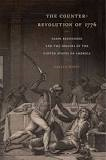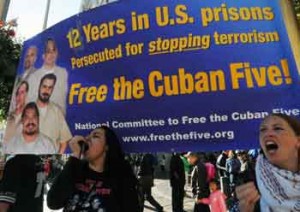By James Thompson
PHill1917@comcast.net
Dr. Gerald Horne, the Moores Professor of History & African-American studies at the University of Houston, has made a major contribution to the field of African-American history by publishing his book, The Counter-Revolution of 1776: Slave Resistance and the Origins of the United States of America.
This book elucidates the rebellious tendencies among Africans in the colonies leading up to the 1776 revolution. He shares a wealth of knowledge which clarifies our understanding of the social upheaval and the events which led up to the 1776 revolution.
This book stands in stark contrast to the typical “whitewashed” accounts of the 1776 revolution written by US historians. Most US students graduate from high school having been immersed in these “bleached” accounts thinking that the 1776 revolution consisted of a white man scurrying through the streets of Boston shrieking “The British are coming! The British are coming!”
Few US historians, with the exception of Herbert Aptheker and W.E.B. DuBois, have anything at all to say about Africans in North America. Professor Horne shines a light on this important but often ignored part of American history.
Karl Marx was one of the first to recognize the complexities and contradictions in the social system of the United States when he wrote: “In the United States of North America, every independent movement of the workers was paralyzed so long as slavery disfigured a part of the Republic. Labour cannot emancipate itself in the white skin where in the black it is branded. (Marx, Karl and Engels, Frederick, Collected Works, Vol. I, Ch. 10, Section 7, pg. 329).
Professor Horne’s book is timely
Dr. Horne’s book is timely in that it appears at the same time Treyvon Martin was murdered for wearing a hoodie, Michael Brown was shot dead by an Anglo police officer for walking in the street and Eric Garner was choked to death by an Anglo police officer. The book also appeared just about the time popular movies hit the screens to include Django and 12 Years a Slave.
Of course, all these events are occurring in the midst of the vilest, right wing bashing of the first African-American president of the United States. Reactionary racism has dominated the mass media in the United States for the past six years and much of the progressive left has responded by retreat into isolation. Perhaps Dr. Horne’s book will be a clarion call to action for people of conscience who oppose the repulsive, poisonous vitriol spewed out by the hysterical, red faced white fascists. Some analysts say that right-wingers constitute about 1/3 of the electorate of the USA.
The struggle between pro-slavery and anti-slavery forces
Professor Horne shines light on the intrigue which accompanied the development of the new Republic. He discusses the alliances that formed between the Africans, the British and the indigenous population in North America. He notes that the threat that these alliances posed to the slave-holding bourgeois class helped propel the colonists to revolution. Much more research is needed, but Professor Horne’s account of these developments may suggest that these anti-slavery tendencies among the Africans, British, and indigenous people as well as the anti-slavery tendencies among certain leaders of the colonists, and certain elements of the Spanish, French and Mexican governments may have been crucial to the development of the progressive movement in the United States. It is important to remember that Thomas Jefferson and Benjamin Franklin were opposed to slavery and were active in the struggle against slavery. Britain abolished the slave trade in 1807, and the United States followed close behind by abolishing the slave trade in 1808. Britain abolished slavery in 1833 and the United States followed in 1865, about 32 years later.
Dr. Herbert Aptheker wrote about the struggle between pro-slavery and anti-slavery elements in the development of the American Republic in a chapter on the Declaration of Independence: “The second major congressional revision of Jefferson’s document resulted in the excision of a long passage-more than 150 words-dealing with slavery and the slave trade. This passage appeared as the final, climactic, item in the listing of abominations brought upon the colonies by George III, justifying resistance to his forcible efforts to retain them. In this passage Jefferson excoriated the King for vetoing repeated colonial efforts to curtail or to ban the African slave trade and denounced not only the trade but the system of production which it served. Due to the heated objections of the delegates from slaveholding Georgia and South Carolina and the somewhat less intense objections from several delegates from Massachusetts, Connecticut, and Rhode Island, where slave trading had been an important business, this entire passage was excised. In the Declaration not a word is found of the slave trade, and slavery appears obliquely and very briefly in an attack on the King for having “excited domestic insurrections amongst us.” (Aptheker, Herbert, The American Revolution 1763-1783, International Publishers, New York, 1960, p. 101). Prof. Aptheker also wrote: “Especially striking is the fact that while the Declaration spoke of equality, liberty and the pursuit of happiness, 600,000 American slaves-slaves for life, who transmitted their status to all offspring, through the maternal line-were held to labor under the lash. It is indeed one of the most painful and yet most revealing facts in American history that the author of the Declaration of Independence was himself a slave owner (Ibid., p. 108).
Definition of revolution
It is important to note that both progressive and reactionary tendencies in the colonies interacted in such a way that it culminated in an anti-imperialist revolution. Lenin defined revolution as follows: “The passing of state power from one class to another is the first, the principal, the basic sign of a revolution, both in the strictly scientific and in the practical political meaning of that term.” (Lenin, V.I., Letters on Tactics (1918) Lenin Collected Works, Progress Publishers, 1964, Moscow, Volume 24, pp. 42-54). In the case of the American Revolution, state power passed from the feudalistic, aristocratic, bourgeois classes in Britain to the non-feudalistic, non-aristocratic, bourgeois class in the 13 colonies.
Definition of counterrevolution
Professor Horne argues that there were elements among the American revolutionaries who used the revolution opportunistically to postpone the abolition of slavery in North America. Some might argue that these reactionaries were actually counter-revolutionaries.
Counterrevolution may be defined as the passing of state power from an advanced class to a less advanced class, e.g. from the working class to the bourgeoisie. The 1917 Russian revolution was a passing of state power from the bourgeoisie to the proletariat. The end of the Soviet Union was a counter-revolution because state power passed from the working class to the bourgeoisie.
It could also be argued that the pro-slavery tendencies that Dr. Horne writes about may have been an important part of the development of the right wing and fascist tendencies in the United States in more recent years.
Revolution or counterrevolution
Others may argue that since the British aristocracy and bourgeoisie were overthrown in the colonies and state power passed to the bourgeois class in the colonies, the American Revolution was a revolution indeed according to Lenin’s definition i.e. the passing of state power.
In any case, the American Revolution, as any bourgeois revolution must be, was clearly contradictory and complex. These complexities and contradictions are still in effect to this day.
The liberation of slaves was essentially a humanitarian and democratic question since the passing of state power to the slaves is not essential to the concept of the liberation of slaves. This passing of state power is essential to the concept of revolution or counter-revolution. For example, in the middle of the 19th century in the USA there was a liberation of slaves under the regime of Abraham Lincoln, but there was no passing of state power from one class to another. There was merely a consolidation of state power in the bourgeoisie in the Northern states. Similar to the case of the slaves, in the Civil War there was no passing of state power to women, indigenous people and other sectors of the working class. Therefore these were not questions of revolution or counter-revolution, they were questions of liberty, humanitarianism and democracy.
The struggle between pro-slavery and anti-slavery elements laid the groundwork for the struggle between progressive and reactionary forces today.
Dr. Horne points out correctly that David Duke, a racist fascist, received a great deal of support in his campaign to be governor of Louisiana. He did win a majority of the Anglo vote in this race. However, it is important to remember that Duke did not win the election. Even in reactionary Louisiana, a coalition of moderate forces prevailed and repelled this repugnant Nazi.
In recent years we have seen a passing of state power from one sector of the bourgeois class, i.e. the liberal sector, to another sector of the bourgeoisie, i.e. the reactionary sector. Therefore, this passing of state power from one sector to another sector of the same class is not a revolution according to Lenin’s definition. Recently, the reactionary sector has succeeded in rolling back many reforms brought about during the Roosevelt years. Many civil liberties and social programs have been severely limited or eliminated altogether. Violent racist action has increased and many innocent workers and their family members have been slaughtered.
Some on the left confuse the concept of a proletarian revolution with the concept of revolution. It is important to remember that according to Lenin’s definition of revolution, the passing of state power can be from any class to any other class. Once again, the American revolution resulted in a passing of state power from the British bourgeoisie to the American bourgeoisie over the British colonies in North America. Therefore, the exclusion of African slaves, European women, European and Asian indentured servants, the indigenous and Latino populations of North America and other oppressed peoples does not preclude the regime change during the late 18th century from being a revolution.
Conclusion
Thanks to Professor Horne’s work, we now have a better understanding of the various components of the dialectical process in the struggle between proslavery and anti-slavery forces leading up to the foundation of the American Republic. We also can see that the struggle continues for a more perfect union between the reactionary and progressive forces today. Horne’s book enlightens us about the history of the struggle for African-American equality in the United States, the struggle against slavery, the struggle against racism as well as the roles these various struggles played in the development of the country.
Hopefully, many people will read this important book and it will raise their consciousness about the history of the United States of America. This could mark a turning point and further the development of a mass movement against racism, sexism and fascism. People will reject fascism and its negative ideology when they understand that it will lead to war and destruction (perhaps of the whole world). Horne’s book can contribute to this future positive turn of events.
PHill1917@comcast.net













